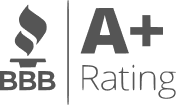Many nonprofits are undoubtedly under intense stress and pressure following the current Trump policies. Federal support is shifting, the donation boom of the COVID era is far behind us, and economic headwinds are picking up speed. Now, the big question is, how are nonprofits responding to economic uncertainty? In today’s podcast, Stephen Halasnik from Financing Solutions, the leading provider lines of credit to nonprofits similar to a on-demand emergency loan for nonprofits, discusses how nonprofits are responding under the Trump administration.
Summary
A Defining Moment for the Nonprofit Sector
2025 has ushered in a wave of change, and nonprofits are finding themselves on the frontlines. From shifts in federal policy to signs of a slowing economy, organizations that serve the public good are walking through uncertain terrain with limited roadmaps. And while nonprofit work is built on passion, the current situation is demanding something more: strategy, flexibility, and proactive planning.
This moment marks a turning point. For many leaders, it’s the first time they’re truly confronting how nonprofits are responding to economic uncertainty, not just in theory, but in real-time. And the decisions made now could determine which organizations survive and which ones thrive.
Economic Shifts Are Forcing Nonprofits to Reassess
Over the past decade and a half, the nonprofit sector operated in relatively stable economic conditions. Many executive directors, especially those who took on leadership roles after the 2008 financial crisis, have only known a world of growth, expanding donations, and reliable grant cycles.
But that era is changing. Inflation, donor fatigue, and delayed government payments are beginning to take a toll. The signs of a potential recession are no longer hypothetical, they’re showing up in cash flow reports, fundraising numbers, and operating budgets. And so, a new question emerges: how are nonprofits responding to economic uncertainty when the systems they’ve relied on are shifting?
The COVID-19 Paradox: A False Sense of Security?
One of the most interesting twists in recent nonprofit history was what happened during the COVID-19 pandemic. Despite a nationwide economic downturn, donations to nonprofits actually went up. That surge in generosity provided a cushion that helped many organizations survive or even thrive through the crisis.
However, that surge has slowed, and by mid-2024, donation trends began dipping. Foundations pulled back while individual donors became more cautious. By 2025, the sector began to feel the strain, such that organizations that had grown quickly or expanded their programming during the pandemic boom are now grappling with contraction.
So, this is where many are beginning to reckon with how nonprofits are responding to economic uncertainty, with some realizing they may have expanded too fast, or without the reserves to weather a downturn.
Federal Funding Cuts Create New Challenges
Recent policy shifts under the Trump administration have added another layer of pressure. Several federal programs, particularly those focused on diversity, equity, inclusion, and free speech, have been sharply reduced or eliminated. These cuts hit fast and, for many, without warning.
Thus, nonprofits that rely on federal grants for core programming, advocacy efforts, or staffing have suddenly found themselves scrambling. And the ripple effects are being felt across the sector.
Now, what’s becoming clear is that responding to economic uncertainty isn’t just about adjusting numbers in a spreadsheet. It’s about reevaluating how your organization operates at a fundamental level, what programs are essential, what costs can be cut, and how to diversify revenue streams before it’s too late.
A Hesitant Start to the Year
Interestingly, the beginning of 2025 saw many nonprofits hit the brakes, like pausing hiring and delaying large purchases. Some even held off on applying for credit or expanding fundraising campaigns, unsure of what was coming next.
However, by April 2025, a clear trend began to emerge. Payment delays from government agencies, especially state and federal grants, created immediate cash flow issues. In response, more nonprofit organizations are beginning to seek new financing options, like nonprofit lines of credit, to stay afloat.
This shift to other financing solutions underscores a key strategy in how nonprofits are responding to economic uncertainty: building in financial flexibility before it becomes a crisis.
Is Getting a Line of Credit a Smart Move?
During stable times, a line of credit might feel unnecessary. But when funding becomes unpredictable, it can be a lifeline.
Many nonprofits are now realizing the importance of having a credit line in place, not as a last resort, but as part of their broader financial toolkit. Having access to quick capital allows organizations to manage cash flow gaps, cover payroll during delays, and respond to urgent needs without derailing their mission.
One emerging trend is that nonprofits are applying for credit earlier, not when things are already falling apart, but as a preventive measure. This approach is becoming central to how nonprofits are responding to economic uncertainty in 2025.
Financial Readiness Starts with Budget Clarity
If there’s one thing most nonprofits do well, it’s budgeting. Operating with tight margins and limited overhead has made many organizations naturally frugal and fiscally responsible.
This popular saying, “Hope for the best but prepare for the worst,” should always be in your head as a nonprofit leader. You should regularly run “what-if” scenarios. What if your major donor pulls out? What if grant disbursements are delayed another six months? What if your gala doesn’t raise what you expect?
Hence, you must understand that scenario planning is no longer optional but a vital part of responding to economic uncertainty with clarity and control.
Agility is a Competitive Advantage
Economic shifts that once took three to five years now seem to unfold in a matter of months. That means long-term strategic plans must now include short-term pivots.
Preparedness doesn’t just mean cutting costs. It also means knowing where and how to pivot. What expenses could be reduced with minimal impact? What new funding sources might you explore? These questions need to be addressed before they become urgent.
In 2025, how nonprofits respond to economic uncertainty is closely tied to their ability to adapt quickly, without losing sight of their purpose.
Strength in Peer Networks
One of the most underrated tools nonprofits have during turbulent times is each other. Peer support and community collaboration are vital resources for creative problem-solving and emotional resilience.
Unfortunately, executive directors often carry the weight of uncertainty alone. But those who engage in regular conversations with other leaders are discovering a wealth of shared insights and ideas. They’re also reminded that they’re not alone in that situation.
Collaboration and transparency across the sector will shape how nonprofits are responding to economic uncertainty, not as isolated organizations, but as a collective force for good.
Prioritizing Survival Without Guilt
For many nonprofit leaders, the thought of cutting programs or slowing growth feels like failure. But survival isn’t selfish, it’s responsible.
Always remember, you can’t serve your mission if your organization ceases to exist. The best thing you can do for your community is ensure your nonprofit is still around a year or ten years from now.
Framing sustainability as a long-term impact strategy is a key shift in how nonprofits are responding to economic uncertainty with wisdom, not fear.
The Real Risk? Running Out of Cash
It’s not mission drift or lack of passion that causes most nonprofits to fail, it’s cash flow issues. And it usually happens faster than expected.
This is why building reserves, setting up credit lines in advance, and developing a solid expense-reduction plan are so crucial. These actions provide breathing room when the unexpected hits, and they give you options when everything else feels uncertain.
Looking Ahead: Plan for Recovery Now
Even while managing today’s challenges, forward-thinking leaders are looking ahead. What will your organization look like in two to three years? What changes do you need to make now to position yourself for growth once stability returns?
Creating a future-focused vision doesn’t just guide your strategy, it also inspires your team. When staff and supporters see that your organization has a plan beyond survival, it boosts confidence and builds momentum.
Don’t forget, successful recovery will belong to those who took the time to prepare, not just for the worst, but for what comes after.
Competition and Opportunity in a Changing Sector
It’s an uncomfortable truth, but during economic downturns, some nonprofits will not survive. This creates opportunities for others to absorb their funding streams and donor bases.
Nonprofits that prepare and persevere may emerge stronger, with access to increased support from foundations, government, and individual donors. Planning for resilience now can set your organization up for growth later.
Leading with Empathy and Clarity
As a nonprofit leader, you should be mindful of your team’s emotional state. Staff members may be deeply committed to the cause, but they’re also concerned about job security. You should over-communicate priorities, offer reassurance, and reinforce the organization’s commitment to surviving and thriving.
Focusing the team’s energy on what matters most, especially during uncertainty, keeps morale up and productivity steady.
Learn About Stephen Halasnik
Stephen Halasnik is a Managing Partner at Financing Solutions, the largest provider of lines of credit to small nonprofits in 48 states since 2012. A line of credit is like an on-demand bridge loan for nonprofits when needed. Mr. Halasnik has hosted the popular Nonprofit MBA Podcast since 2018. The podcast brings experts together to discuss fundraising, nonprofit grants, executive director leadership, nonprofit boards, and other essential topics. You can learn more about the nonprofit line of credit program here.




